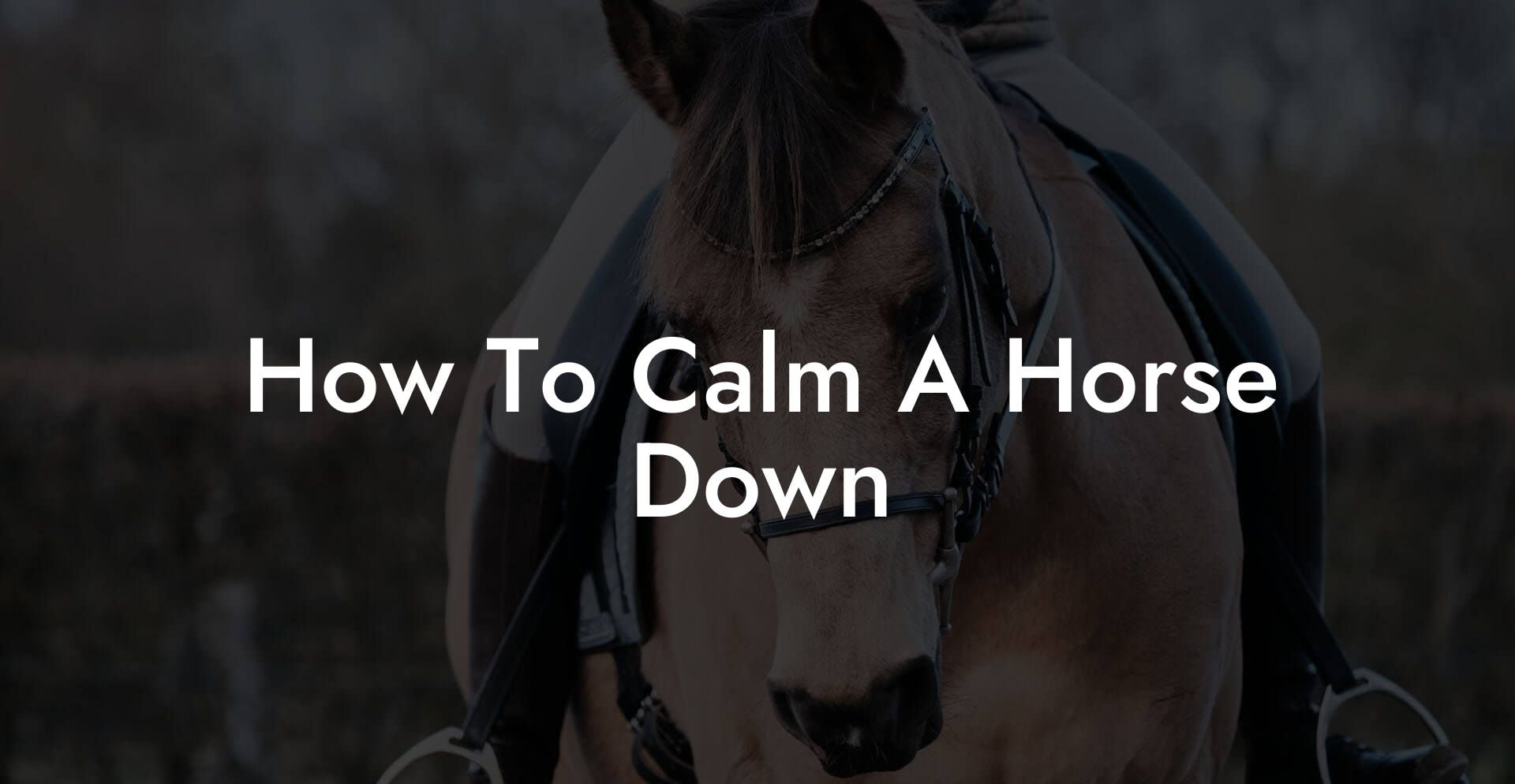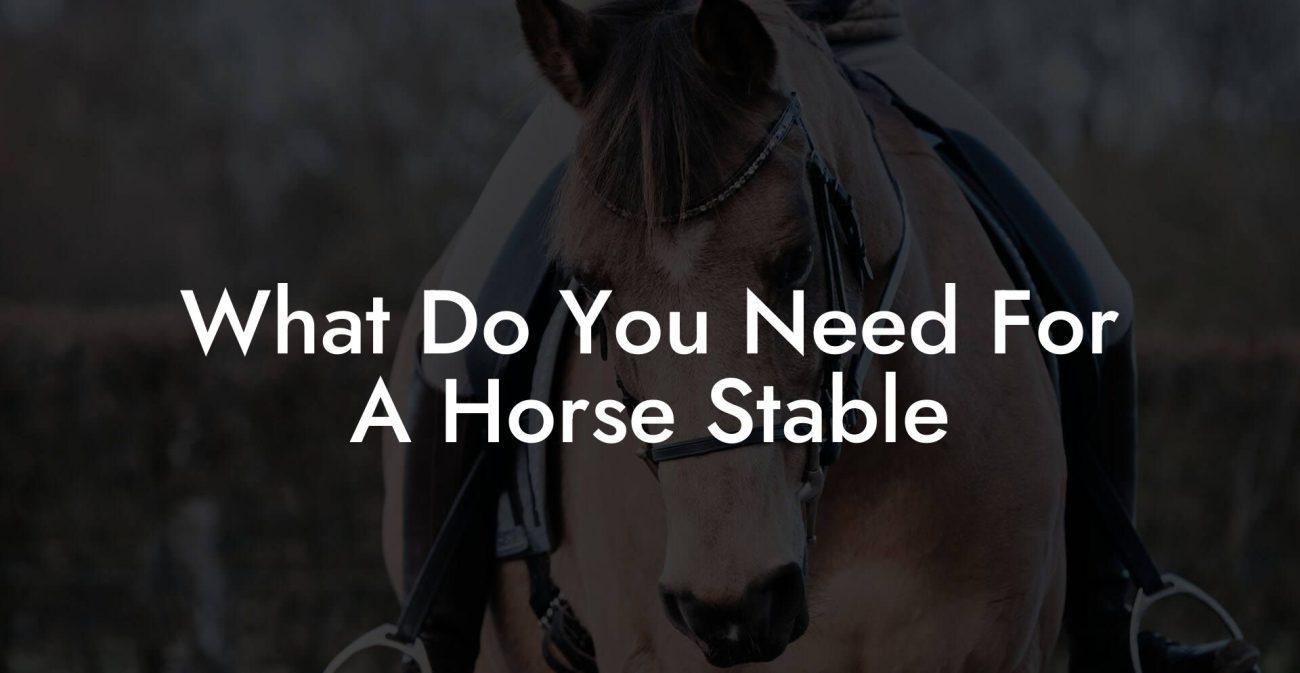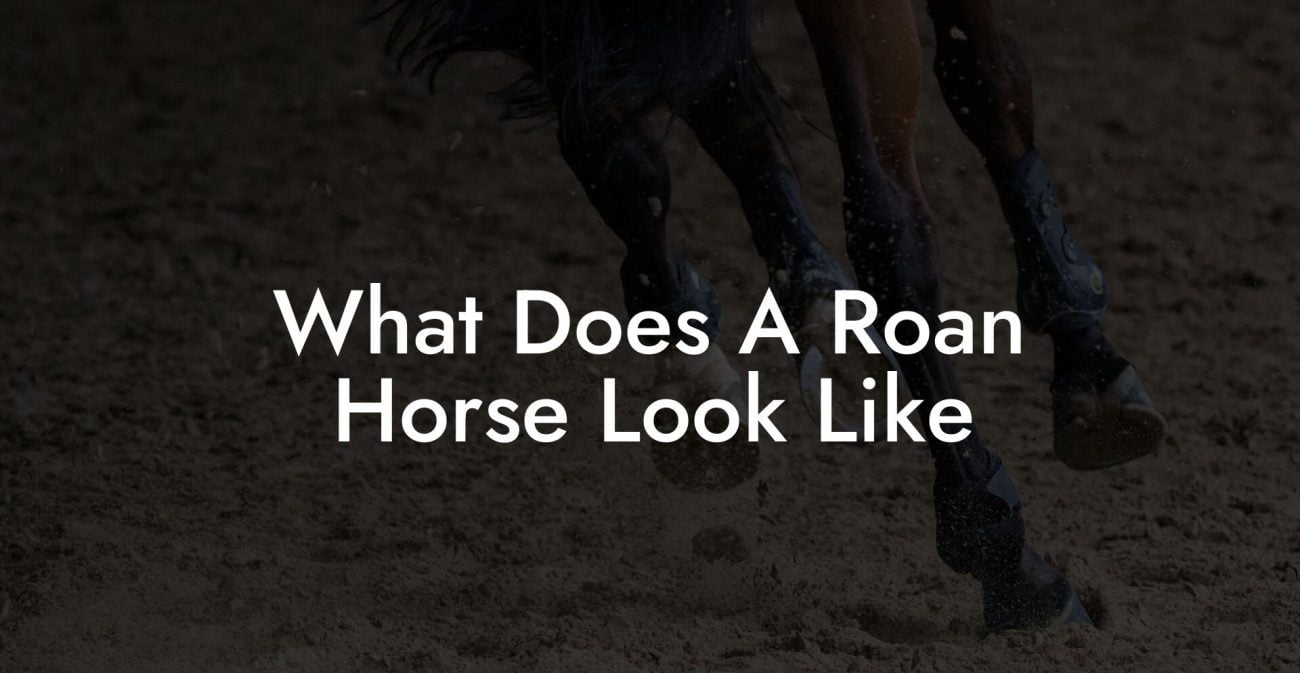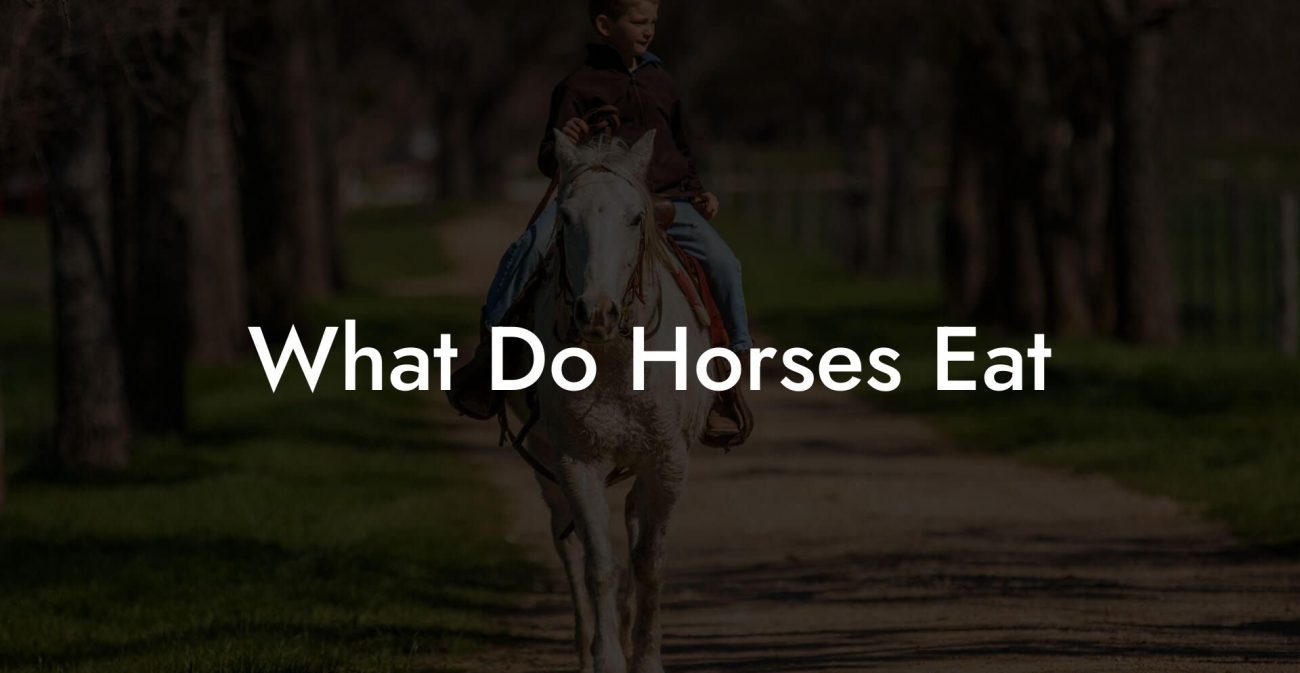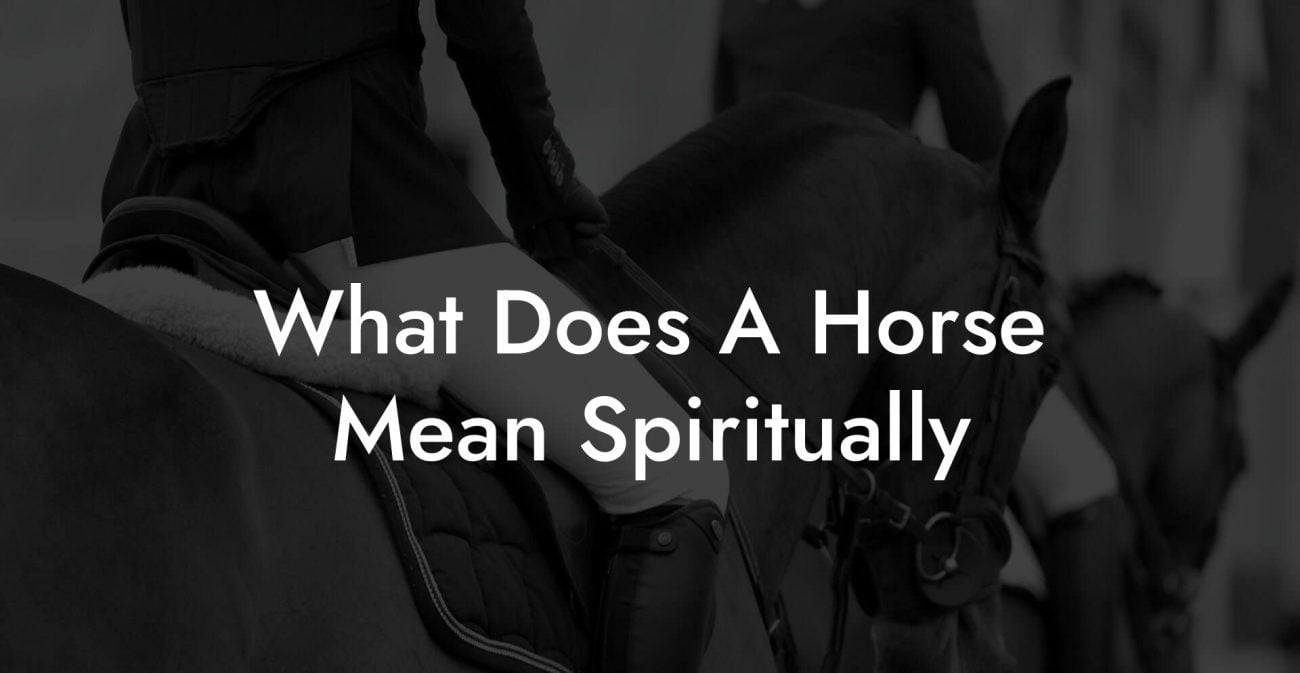Ever tried coaxing a feisty horse into chill mode using nothing but your killer playlist and a mismatched pair of boots? If that sounds like your recent rodeo, then you’re in the right place. This isn’t your grandma’s equine care guide, this is a bold, down-to-earth journey into the art and science of calming a horse down. We’re talking about transforming a jittery, on-edge mare into your laid-back, Instagram-worthy partner in crime using a mix of modern equine psychology, holistic vibes, and street-smart horse whisperer techniques. Get ready to dive deep into everything from understanding your horse’s quirky personality to creating an environment that even the chillest Gen-Z influencer would envy.
Quick Links to Useful Sections
- Understanding Horse Behavior: More Than Just a Big, Majestic Beast
- Why Horses Get Stressed: Identifying the Triggers
- Conventional Techniques for Calming a Horse Down
- 1. Gentle Handling and Slow Movements
- 2. Soft, Soothing Voice
- 3. Routine and Familiarity
- 4. Desensitization and Counter-Conditioning
- Holistic and Integrative Approaches: Bringing the Zen to the Stable
- Aromatherapy and Essential Oils
- Equine Massage and Acupressure
- Herbal Supplements and Nutritional Support
- Soothing Music and Ambient Sounds
- Mind-Body Practices: Building Trust and Deep Connections
- Groundwork and Trust-Building Exercises
- Meditation and Mindfulness for Riders
- Interactive Play and Enrichment
- Crafting a Calming Environment: The Art of a Peaceful Stable
- Lighting and Ambiance
- Noise Management
- Comfortable Bedding and Cleanliness
- Outdoor Access and Natural Scenery
- Integrative Case Studies: riding the Waves of Calm
- Case Study 1: Bella’s Breakthrough
- Case Study 2: Duke’s Journey from Jitters to Zen
- Case Study 3: Luna’s Environmental Transformation
- Designing Your Personalized Horse Calming Plan
- Step 1: Assess and Observe
- Step 2: Consult the Experts
- Step 3: Blend Techniques for Maximum Impact
- Step 4: Establish a Consistent Routine
- Step 5: Monitor Progress and Adjust as Needed
- Resources and Community Support: Your Next Steps
- Equine Care Tips: Expert Advice for the Modern Horse Owner
- FAQ: Your Top Questions on Calming Horses Answered
- Your Journey to a Calmer, Happier Equine Partner
Understanding Horse Behavior: More Than Just a Big, Majestic Beast
Horses are mysterious, complex creatures with minds that can sometimes seem more unpredictable than the latest social media trend. As prey animals, their instinctual drive is to be aware, cautious, and ever-alert. This means that even a slight noise or an unexpected movement can turn your beloved equine companion into a bundle of nerves. Understanding their behavior is the first step to calming them down.
When you watch a horse in the wild, you’ll notice constant movement and alert postures, ears twitching, eyes scanning the horizon, muscles primed for flight. Domesticated horses carry these instincts with them, even when they’re living the luxe life in a stable. For the modern horse owner, recognizing the subtle cues of stress or excitement in your horse is essential for effective management and care.
Key behavioral indicators include rapid ear movements, a fixed stare, a trembling body, or even a sudden nip. These signs can be your horse’s silent SOS calling for a reminder that everything’s okay. As you navigate your equine journey, remember: a calm horse is a happy horse, and it all starts with understanding what triggers your horse’s stress response.
Why Horses Get Stressed: Identifying the Triggers
Just like you binge-watching your favorite series after a stressful day, horses have their own ways of getting overwhelmed. There are several triggers that can send a horse’s stress levels skyrocketing:
- Environmental Noises: Sudden gunshots, car horns, and even the off-key strum of an acoustic guitar can make a horse bolt.
- New Surroundings: Changes in routine, new horses in the stall, or even rearranged barn furniture can disrupt your horse’s sense of security.
- Optical Overload: Flashy objects, intricate patterns, or even a particularly bright smartphone screen can catch your horse’s attention in less-than-relaxing ways.
- Rider’s Energy: Horses are incredibly intuitive. If you’re stressed, anxious, or sporting a jittery vibe, your horse will pick up on it faster than you can say “stable.”
Knowing these triggers helps not only in anticipating when your horse might need a calming intervention but also in adjusting their environment to minimize stress. In other words, a relaxed environment isn’t just about soft lighting and serene playlists, it’s also about understanding the sensory world from a horse’s perspective.
Conventional Techniques for Calming a Horse Down
Let’s get real: while holistic and modern strategies have their charm, some old-school methods remain incredibly effective in keeping your horse chill. Here are tried-and-true techniques that have been used by equine experts for generations:
1. Gentle Handling and Slow Movements
Horses are hyper-alert to sudden actions and quick gestures. They need to understand you’re not about to make a dash for the exit mid-conversation. Keeping your movements slow and deliberate helps signal that there’s no imminent danger. Think of it as the equine equivalent of dimming the lights and turning down the bass at a rave; subtlety is key.
2. Soft, Soothing Voice
Ever noticed how many animal calming videos feature a gentle, almost hypnotic narration? Your horse is no different. A soft, reassuring tone, peppered with the occasional humorous quip (because who says calm can’t be fun?), can work wonders in reducing your horse’s anxiety.
3. Routine and Familiarity
Horses thrive on routine. Just as you might feel anxious when your favorite coffee shop changes its menu, your horse can become unsettled by deviations from its daily schedule. Ensuring consistent feeding times, structured exercise sessions, and familiar routines help maintain a baseline of calm.
4. Desensitization and Counter-Conditioning
These psychological training techniques involve gradually exposing your horse to the stimulus that typically causes anxiety, be it a strange object or an unfamiliar sound. Through repeated, controlled exposure paired with positive reinforcement (like treats or praise), your equine friend learns to see these triggers as non-threatening, making them much easier to handle.
Incorporating these conventional methods not only builds trust between you and your horse but lays the foundation for a calmer, more responsive partner in your equine adventures.
Holistic and Integrative Approaches: Bringing the Zen to the Stable
In today’s fast-paced world, holistic approaches are trending, why not extend that vibe to our equine pals? Integrative equine care goes beyond simple handling; it taps into the mind-body connection, creating a serene environment that soothes the soul of the horse.
Aromatherapy and Essential Oils
Yes, essential oils aren’t just for your skincare routine. Certain scents, like lavender and chamomile, have natural calming properties that can help soothe a stressed horse. Diffusers in the stable, or even a light mist of diluted essential oil applied to the horse’s halter area, can create a soothing olfactory backdrop that counteracts anxiety.
Equine Massage and Acupressure
Think of it as a spa day for your horse. Regular massages can relieve muscular tension, promote blood circulation, and reduce overall stress. Acupressure techniques applied to specific points on your horse’s body can also help release endorphins and foster relaxation. It’s the ultimate self-care routine with a hoofed twist.
Herbal Supplements and Nutritional Support
Feeding your horse the right nutrients can play a significant role in maintaining an even temperament. Supplements containing magnesium, vitamin E, and herbal extracts (like valerian root) are known for their calming effects. Consult your vet before adding these to your horse’s diet to ensure you’re using them safely and effectively.
Soothing Music and Ambient Sounds
Ever wonder why your favorite lo-fi beats help you chill out? Horses can benefit from music too. Studies have shown that classical tunes or specially designed equine playlists can lower heart rates and create a peaceful atmosphere in the stable. Set up a sound system that plays gentle melodies throughout the day, and watch your horse’s tension melt away.
Integrative strategies like these don't just calm your horse, they also create a nurturing environment that supports overall well-being. Merging traditional care with holistic touches can lead to a more resilient and relaxed equine companion.
Mind-Body Practices: Building Trust and Deep Connections
Horses aren’t just animals; they’re emotional beings capable of profound connections with those around them. Incorporating mind-body practices into your daily routine can do wonders for creating a bond that makes your horse more receptive to calm and relaxation.
Groundwork and Trust-Building Exercises
Groundwork is all about interacting with your horse at eye level, establishing clear communication, and earning their trust. Simple exercises like leading, yielding, and following subtle cues train your horse to become more responsive to your guidance. This isn’t a drill, it’s the secret sauce to developing a deep, respectful relationship founded on mutual trust.
For instance, start with basic desensitization activities such as gently touching their legs, slowly introducing a new object, or even using a long training stick to tap lightly. Over time, your horse learns that these actions are safe, paving the way for a calmer and more trusting behavior.
Meditation and Mindfulness for Riders
It might sound a bit out there, but practicing mindfulness yourself can have a direct impact on how your horse behaves. When you’re centered and at peace, your equine partner picks up on that tranquility and mirrors it. Simple meditation practices, like a five-minute breathing exercise before handling your horse, can help create a harmonious atmosphere that radiates calmness.
Interactive Play and Enrichment
Never underestimate the power of play. Engaging your horse in interactive games and enrichment activities, such as obstacle courses or puzzle feeders, stimulates their mind and helps release pent-up energy. A mentally engaged and stimulated horse is less likely to spiral into anxious behaviors.
By investing time in these mind-body practices, you not only enhance your horse’s well-being but also create shared moments of joy and relaxation that reinforce your bond. After all, the stronger the connection, the easier it becomes to usher in a state of calm.
Crafting a Calming Environment: The Art of a Peaceful Stable
The physical surroundings of your horse play an enormous role in shaping their mood. Just like your living space influences your own vibe, a thoughtfully arranged stable can be a sanctuary of peace for your horse.
Lighting and Ambiance
Natural light is a powerful mood regulator. When possible, let sunlight filter into your barn. Soft lighting during the early morning or twilight hours can mimic the tranquil phases of nature. Consider installing dimmable lights that allow you to adjust the brightness based on the time of day and the mood you want to create.
Noise Management
Horses can be extremely sound-sensitive. Reducing abrupt and high-volume noises will help avert startling your horse. Simple measures like soundproofing certain areas of the barn or playing continuous, soft background music can help mask disruptive sounds from the outside world.
Comfortable Bedding and Cleanliness
A clean, well-maintained stall with soft bedding can do wonders for stress relief. The sense of comfort provided by fresh hay and a clean environment is similar to the contentment you feel when your room is tidy and visually appealing. This basic yet critical attention to detail creates a haven where your horse can truly relax.
Outdoor Access and Natural Scenery
Horses are naturally drawn to open spaces. Regular access to a pasture or a well-designed turnout area not only provides physical exercise but also enriches their sensory experience. A landscape filled with trees, gentle breezes, and soothing sounds of nature can transform your horse’s mood in no time.
Bringing together these elements into a cohesive environmental strategy can dramatically reduce anxiety and foster a serene, stable life for your horse. In essence, you’re designing a five-star retreat for your equine partner.
Integrative Case Studies: riding the Waves of Calm
Real-life stories are where the magic happens. They remind us that every horse has its own tale of transformation from high-strung to downright chill. Here are a few inspiring case studies that highlight successful calming strategies:
Case Study 1: Bella’s Breakthrough
Bella was a young, spirited mare known for her unpredictable bursts of nervous energy. Her owner, a creative millennial with a passion for DIY stable improvements, noticed Bella’s anxiety spikes during thunderstorms and unfamiliar encounters. After implementing a blend of conventional methods, like slow, reassuring handling and desensitization drills, alongside integrative techniques such as aromatherapy and equine massage, Bella began to show remarkable progress. Her once sky-high stress levels dropped noticeably, and today, Bella is known for her calm demeanor during even the most challenging weather. Her transformation offers a shining example of how a multifaceted approach can rehabilitate even the most anxious horse.
Case Study 2: Duke’s Journey from Jitters to Zen
Duke, a mature gelding with a history of fractious behavior, was notoriously difficult to work with. His previous handlers had tried everything from strict discipline to rigorous routines, but nothing truly worked, until a new trainer introduced a holistic regimen. By focusing on building trust through groundwork exercises, coupling gentle handling with quiet meditation sessions for both him and his rider, Duke slowly learned to let go of his anxiety. Incorporating soothing music in the stable and even trying guided acupressure techniques, Duke was able to embrace a calmer state of mind and body. His case is a testament to the fact that even deep-seated behavioral patterns can be rewritten with patience, care, and integrative strategies.
Case Study 3: Luna’s Environmental Transformation
Luna, a popular show horse, was famous for her graceful presence on the field, but beneath the surface, she battled stress during transport and sudden changes in routine. Her owner decided to overhaul Luna’s environment, upgrading the stable with modern noise-canceling features, improved lighting systems, and customized bedding for maximum comfort. Additionally, regular exposure to nature through extended pasture time helped Luna acclimate to new places without panic. The results were impressive: Luna not only maintained her competitive edge but also exhibited a newfound calmness, making her easier to train and manage. This case emphasizes that a well-thought-out environment is as crucial as direct interventions when it comes to calming a horse.
These case studies reflect the power of combining traditional techniques with modern integrative methods. They serve as a reminder that patience, creativity, and a willingness to embrace holistic care can lead to remarkable improvements in your horse’s demeanor and overall quality of life.
Designing Your Personalized Horse Calming Plan
Crafting a tailored approach to calming your horse is akin to curating a personal playlist that perfectly matches your mood, it’s deeply individual and must cater to your horse’s unique temperament and life story. Here’s a step-by-step guide to get you started on designing a plan that seamlessly combines conventional techniques with holistic enhancements.
Step 1: Assess and Observe
Begin by taking a detailed look at your horse’s daily routine and identifying stress triggers. Is your horse jumpy during feedings, or does a sudden change in weather send it into a frenzy? Documenting these reactions, either mentally or in a dedicated equine journal, will help you understand where the problems lie.
Step 2: Consult the Experts
While online resources and fellow horse enthusiasts can offer great insights, nothing beats the guidance of a seasoned equine behaviorist or trainer. Their observational skills and professional expertise can help pinpoint areas for improvement and suggest practical interventions.
Step 3: Blend Techniques for Maximum Impact
Combine the best of both worlds, integrate conventional methods such as gentle handling and desensitization with holistic practices like aromatherapy, equine massage, and environmental tweaks. The goal is to create a rounded plan that addresses both the physical and emotional needs of your horse.
Step 4: Establish a Consistent Routine
Consistency is the magic ingredient here. Develop a routine that includes daily groundwork exercises, scheduled massage sessions, regular playtime, and periods of quiet relaxation with soothing music. Consistency not only reinforces trust but also helps your horse anticipate a calm, predictable environment.
Step 5: Monitor Progress and Adjust as Needed
As with any personalized plan, it’s crucial to regularly assess your horse’s responses. Keep track of behavioral changes and adjust your strategy accordingly. If a particular technique isn’t yielding the desired results, experiment with other approaches. Patience is key, transformative change takes time.
Embracing this multifaceted approach ensures that you’re not just addressing symptoms of anxiety, but actively cultivating an overall sense of well-being in your horse. With each small victory, you’re building a foundation of trust, serenity, and resilience.
Resources and Community Support: Your Next Steps
You’re not in this out on your own, there’s a vibrant community of equine enthusiasts, trainers, and holistic practitioners who are as passionate about calming horses as you are. The internet is brimming with online forums, social media groups, and educational platforms dedicated to equine care. Whether you’re looking for the latest tip on using essential oils in the stable or need advice on troubleshooting a stressful behavior, there’s always someone ready to lend a helping hand.
Consider joining online communities like Facebook groups or Reddit threads dedicated to horse training and equine behavior. You might even find local workshops, webinars, or training sessions that offer hands-on guidance. Furthermore, many equine clinics now embrace holistic methods, providing consultations and holistic therapy sessions for your horse.
Investing time in community engagement not only broadens your knowledge base but also connects you with like-minded individuals who share your journey, turning what might feel like a solitary struggle into a dynamic, supportive network.
Equine Care Tips: Expert Advice for the Modern Horse Owner
As we wrap our extensive guide on how to calm a horse down, it’s time to share some final, actionable tips to add to your equine toolkit. These nuggets of wisdom come from a blend of experienced horse trainers, veterinarians, and holistic practitioners who have dedicated their lives to equine care:
- Stay Present: Always be mindful of your body language. Horses are incredibly sensitive to nonverbal cues, so maintaining a calm, centered presence sets the tone for your interactions.
- Reward Progress: Whether it’s a gentle pat or a tasty treat, positive reinforcement goes a long way in reinforcing calm behavior.
- Educate Yourself: Keep up with the latest equine science and training techniques. Trust us, knowing the “why” behind your actions makes it much easier to choose the right approach.
- Mix It Up: Variety is the spice of life, even in a stable. Rotate between grooming sessions, massage, low-impact exercise, and moments of quiet connection to keep your horse engaged and relaxed.
- Safety First: Always consider both your own safety and that of your horse when introducing new methods. When in doubt, consult with a professional.
These expert tips not only boost your horse’s quality of life but also enrich the relationship you share, a connection rooted in trust, empathy, and a mutual love for the quieter moments in life.
FAQ: Your Top Questions on Calming Horses Answered
We know you’re full of questions. Here are some of the most common queries we hear from horse enthusiasts, along with answers to help you navigate the sometimes tumultuous journey toward a calmer, more relaxed horse.
1. What are the most effective techniques for calming a nervous horse?
Effective methods range from traditional techniques, like slow, deliberate handling and the use of a soothing voice, to integrative practices such as aromatherapy, equine massage, and environmental adjustments. Combining these with consistent routines typically yields the best results.
2. Can my own mood affect my horse’s behavior?
Absolutely. Horses are highly attuned to the emotional states of those around them. If you’re anxious or stressed, your horse is likely to pick up on that energy. Cultivating self-awareness and practicing mindfulness goes a long way toward creating a calm environment for both of you.
3. Are there natural supplements that help relax horses?
Yes, supplements containing magnesium, vitamin E, and herbal extracts such as valerian root or chamomile can help promote relaxation. However, these should always be used under the guidance of a veterinarian or equine nutritionist.
4. How important is routine in calming a horse?
Routine is very important! Horses thrive on consistency. A structured daily schedule helps reduce uncertainty and minimizes triggers that can lead to stress.
5. Can music really help to calm horses?
There’s a growing body of evidence that shows certain types of music, especially classical or specially curated equine playlists, can have a calming effect on horses by lowering heart rates and reducing anxiety.
6. What simple actions can I take to reduce stress in my horse’s environment?
Adjusting lighting, reducing loud or sudden noises, keeping the stable clean, and providing ample space for turnout are all effective measures. Additionally, incorporating calming elements like natural scents and soft background music can make a noticeable difference.
7. Is groundwork training necessary for calming a horse?
While not strictly necessary, groundwork exercises are incredibly effective in building trust and creating a strong bond between you and your horse, which in turn contributes to a calmer demeanor.
8. How do I know if a holistic approach is right for my horse?
Every horse is unique. If your horse remains anxious despite conventional techniques, incorporating holistic methods such as aromatherapy, massage, or environmental enrichment can be a game-changer. Consulting with a professional trainer or equine therapist can provide personalized guidance.
9. How long does it typically take to see results when implementing a calming routine?
Results can vary depending on the horse’s temperament and previous experiences. Some horses may show improvement within a few weeks, while others might take a few months. Patience and consistency are key.
10. Can I implement these techniques on my own at home?
Many calming methods, such as grounding techniques, environmental adjustments, and basic aromatherapy, can be done at home. However, for severe anxiety or behavioral issues, professional guidance is recommended.
Your Journey to a Calmer, Happier Equine Partner
As you embark on this journey to calm your horse down, remember that every step, no matter how small, is a victory worth celebrating. It’s not just about quick fixes; it’s about transforming the relationship between you and your horse into one built on trust, understanding, and mutual respect. Whether you’re implementing a new desensitization technique, experimenting with a custom-blended essential oil, or simply taking a moment to breathe deeply alongside your equine friend, you’re contributing to a larger story of healing and transformation.
Embrace the journey with the same enthusiasm you do when snapping the perfect TikTok video. Share your milestones, laugh at setbacks, and connect with a community that understands the highs and lows of equine care. With every adjusted routine and every calming technique mastered, you’re not just easing anxiety, you're building a partnership that reflects both modern innovation and timeless care.
So, saddle up and trust in your ability to create a serene, supportive environment for your horse. The path to a calmer and happier equine partner is paved with creativity, persistence, and a whole lot of heart. Your journey starts here, take a deep breath, smile, and know that the harmonious bond you’re cultivating is one for the ages.
From the first gentle pat to the calm moments that follow after a successful session, may every interaction with your horse remind you that healing is not just a destination but a beautiful, ongoing adventure. Cheers to making every day a little more peaceful in the stable and every ride a little more joyful!

